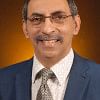
Nawshad Ahmed
Dr Nawshad Ahmed, a retired UN official, is an economist and urban planner.
Dr Nawshad Ahmed, a retired UN official, is an economist and urban planner.
There are three major aspects of women’s empowerment—social, political and economic.
There is ample evidence showing that both domestic and foreign direct investment (FDI) have a significant positive effect on economic growth.
Higher tariffs on Bangladeshi exports will cost more for American consumers, resulting in reduced demand.
Economics, the subject, and its application make it both a science and art.
The Local Government Reform Commission’s recommendation to give zila parishads a stronger planning function makes sense.
The abrupt decision by the Trump administration to freeze almost all USAID operations globally has surprised millions of vulnerable people around the world.
Local government reform must continue, keeping future demand for services in view.
Effective political leadership is essential for achieving democratic governance.
There are three major aspects of women’s empowerment—social, political and economic.
There is ample evidence showing that both domestic and foreign direct investment (FDI) have a significant positive effect on economic growth.
Higher tariffs on Bangladeshi exports will cost more for American consumers, resulting in reduced demand.
Economics, the subject, and its application make it both a science and art.
The Local Government Reform Commission’s recommendation to give zila parishads a stronger planning function makes sense.
The abrupt decision by the Trump administration to freeze almost all USAID operations globally has surprised millions of vulnerable people around the world.
Local government reform must continue, keeping future demand for services in view.
Effective political leadership is essential for achieving democratic governance.
In Bangladesh, challenges hindering the achievement of economic equality are: low public expenditure on education, training, health, rural development and social protection.
Public funds allocation to local bodies is discriminatory.